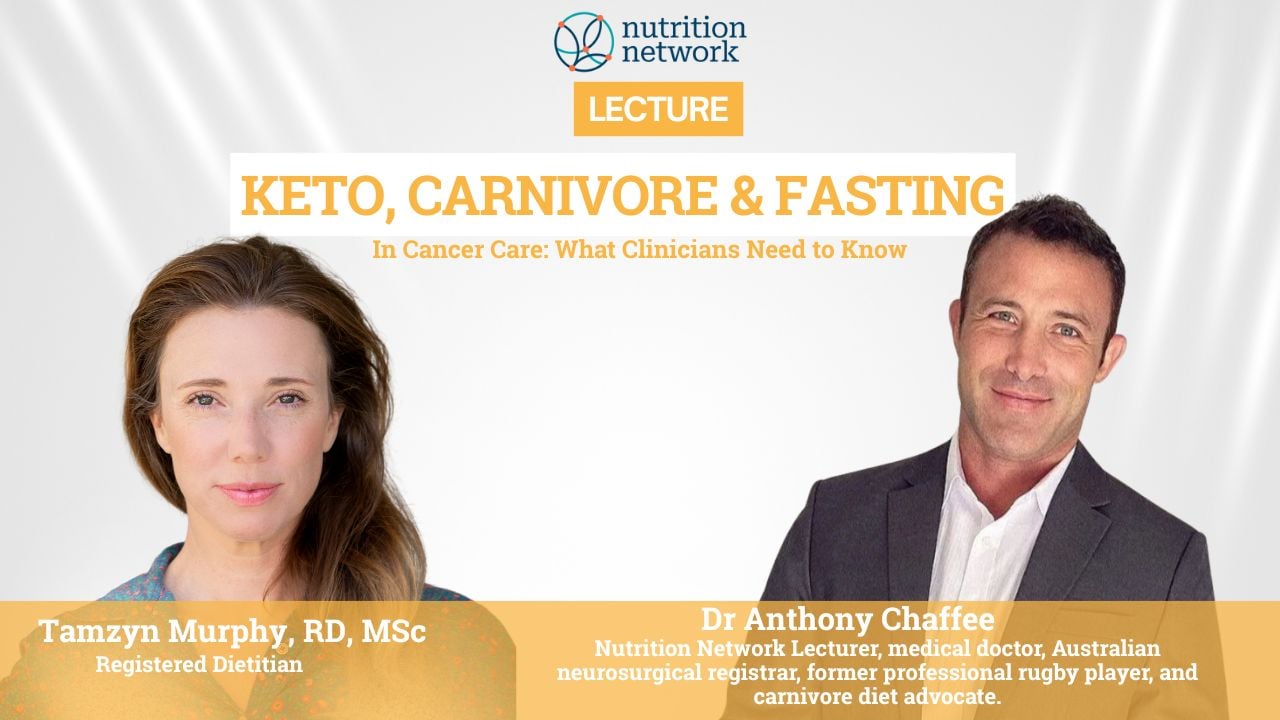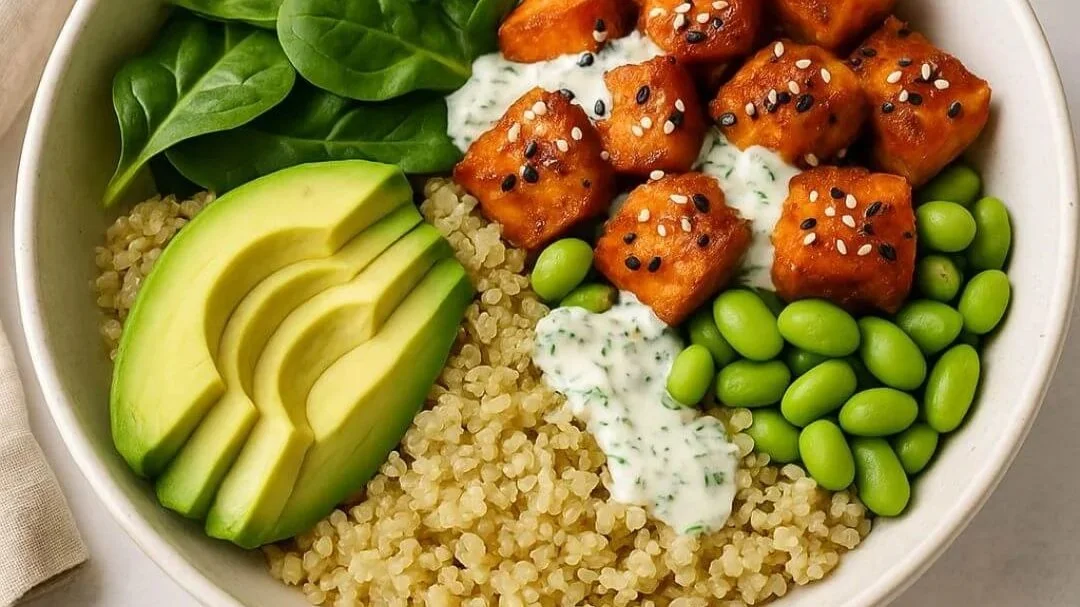By Nutrition Network | Featuring Dr Anthony Chafee, MD
Reviewed by Tamzyn Murphy, RD, MSc
Why revisit cancer’s root cause?
For a century we have taught the somatic (genetic) theory of cancer. But it is not the only cancer theory, and it may not be the foundational one.
“There are obviously competing theories… the metabolic theory of cancer, that this is a mitochondrial disease.” says Dr Anthony Chaffee, Nutrition Network Lecturer, medical doctor, Australian neurosurgical registrar, former professional rugby player, and carnivore diet advocate.
Drawing on Otto Warburg’s early work and modern nuclear–mitochondrial transfer experiments, Dr Chaffee explains why mitochondrial dysfunction can both precede and drive many of the genomic changes we find in tumours. Some carcinogens (e.g., asbestos) are not mutagens; some cancers lack consistent driver mutations; and swapping healthy mitochondria into cancer cells can suppress the malignant phenotype. The common denominator? Broken energy metabolism inside the mitochondria.
When mitochondria fail, cells default to primitive energy pathways: substrate-level fermentation of glucose and glutamine. That shift increases reactive oxygen species, damages DNA and organelles further, and disables two critical mitochondrial “policing” functions—halting cell division and triggering apoptosis.
“The mitochondria are the policemen… if the mitochondria are damaged … you get unregulated cell growth, which is cancer.” — Dr Anthony Chaffee
Prevention begins with mitochondrial hygiene
Before treatment, start with terrain. Dr Chaffee argues for removing mitochondrial insults and restoring metabolic flexibility.
Key strategies he highlights include:
- Fasting and ketogenic or carnivore eating to lower insulin and glucose, triggering autophagy (cellular clean-up) and mitophagy (replacement of damaged mitochondria).
- Reducing exposures that harm mitochondria: chronically high insulin and glucose, fructose excess, and omega-6 linoleic-acid–rich seed oils.
- Being mindful of plant defence chemicals (lectins, cyanogenic compounds, tannins, etc.) that can be irritating, pro-inflammatory, or even directly mitotoxic in susceptible individuals or at higher intakes.
“Plants make about a million different defensive chemicals… many have been identified as carcinogenic or mutagenic.” — Dr Anthony Chaffee
This is not a perfectionist manifesto. As Dr Chaffee notes, progress exists on a gradient. Each step that lowers glycaemic load and chemical burden improves the terrain.
From theory to therapy: how diet integrates into treatment
The metabolic targets
Cancer’s dependence on glucose is not academic; clinicians exploit it in Positron Emission Tomography (PET) imaging with radiolabelled glucose. Tumours “light up” because they pull in far more glucose than normal tissues. Many tumour types are also glutamine-addicted, especially aggressive primary brain tumours such as glioblastoma.
“Cancer cells need 400 times the amount of glucose that normal cells do… and they cannot run on ketones.” — Dr Anthony Chaffee
The therapeutic frame: press–pulse
Dr Chaffee describes a press–pulse approach, based on renowned cancer researcher Thomas Seyfried’s work:
- Press: Maintain sustained metabolic pressure via very-low-carbohydrate to zero-carbohydrate nutrition that produces therapeutic ketosis, often calorie-restricted to keep glucose low and ketones high.
- Pulse: Add intermittent, time-bound strategies (e.g., fasting; in some contexts, off-label glutamine-targeting agents under medical supervision) to temporarily intensify stress on tumour metabolism.
Practical diet design
- Macronutrient targeting:
Dr Chaffee points to evidence favouring an approximately 4:1 ratio of fat to protein by calories (about 80% of calories from fat, 20% from protein) during the therapeutic phase of metabolic cancer treatment. This corresponds roughly to two grams of fat per one gram of protein in meals. He gives the example of ground beef around 60% lean / 35% fat as a simple anchor (with added fats as needed). - Glucose Ketone Index (GKI):
Clinicians can guide patients to track the Glucose Ketone Index, a ratio of blood glucose to blood ketones. Lower glucose and higher ketones move the ratio down. Dr Chaffee suggests a cancer GKI therapeutic target of below 2 on average; or below 1 when possible. - Fasting:
Intermittent or extended fasting can help drop glucose and glutamine availability. But Dr Chaffee cautions that fasts of longer than 5 days require careful refeeding to avoid refeeding syndrome. He notes that fasting is generally tolerated more easily once the patient is already keto-adapted or following carnivore. - Protein: right-sized, not minimal:
Dr Chaffee explains that fears about protein “feeding cancer” or overstimulating growth pathways like mTOR are often misunderstood. In practice, he says, protein doesn’t need to be drastically restricted—it should simply be kept at a moderate level that supports the patient’s health, helping to maintain muscle and prevent wasting, rather than being eliminated or severely limited. - Individualisation:
Dr Chaffee notes that patients who are frail or already losing weight and muscle (cachectic) should approach fasting more cautiously — with shorter or less frequent fasts, regular re-feeding periods, and close medical supervision to maintain strength and stability. He emphasizes that the metabolic approach should always be adapted to the individual’s condition.
What about glutamine?
Glutamine fuels substrate-level phosphorylation (energy production) in many tumours, notably glioblastoma, which may derive a majority of its energy from glutamine rather than glucose.
Dr Chaffee outlines several adjunct possibilities for medical doctors to consider off-label and within local regulatory frameworks:
- Periodic courses of glutamine-antagonising agents used historically in oncology or anti-parasitic care (e.g., DON and others), sometimes in short pulses separated by recovery intervals if tolerated.
- Fasting pulses paired with these agents can deepen the metabolic hit.
- Metformin may assist on the glucose side in appropriate patients.
Important: These pharmacologic elements are physician-directed and off-label in many contexts. Dietitians and CNSs guiding metabolic therapies for cancer patients should partner with clinicians for any pulse strategy (i.e. beyond nutrition and fasting). Coaches should always work with cancer patients as part of a multidisciplinary team.
Real-world signals: beyond the bench
Dr Chaffee cites growing clinical experience and small-to-moderate human studies across multiple cancers—gliomas and glioblastoma, breast, lung, pancreatic, colorectal, melanoma, prostate, thyroid—showing that ketogenic or carnivore-based approaches are safe, feasible, and can improve outcomes, including sensitising tumours to chemotherapy and radiotherapy when applied concurrently.
“Being in ketosis while getting radiotherapy and chemotherapy sensitised the cancer… patients had better outcomes.” — Dr Anthony Chaffee
He also emphasises compelling case experiences, like patients with recurrent disease post-standard therapy who stabilised or regressed on a rigorous metabolic protocol, and some long-surviving glioblastoma patients employing diet plus fasting.
Coffee, tea, and “almost carnivore”: do small things matter?
Clinically, we meet many “carnivore-ish” patients clinging to coffee or tea. Dr Chaffee’s stance is principled but pragmatic:
- Coffee/tea contain many bioactive plant compounds (e.g., caffeine, tannins) designed as defences.
- If the therapeutic goal is maximum inflammatory quiet and minimal plant toxins, elimination may help, especially during intensive phases.
- For patients strongly attached to the ritual, he suggests alternatives (e.g., bone broth or simply warm water) or—if the aim is stimulant only—isolated caffeine without the extra compounds.
“If what you want is the caffeine, then just take the caffeine… there are 150 and other chemicals in coffee and tea besides the caffeine.” — Dr Anthony Chaffee
The clinical bottom line: perfect is not required to make progress, but precision matters during the therapeutic window.
Ethics and practicality: why offer this now
There may never be a single “magic” randomised trial that spans all tumour types, stages, and combinations. But the risk–benefit profile for therapeutic ketosis and fasting—when supervised and individualised—is favourable, and the biologic rationale is strong.
“It’s not going to hurt your patient… and it can absolutely help.” — Dr Anthony Chaffee
At minimum, the data suggest better tolerance and sensitivity to chemo-radiation; at best, some patients may achieve deep, durable responses.
Learn it. Apply it. Teach it. (NN Training + Black Friday)
If you want to bring this into practice with rigour—and have ready-to-use tools for patients—dive into Nutrition Network’s trainings:
1) Cancer: A Metabolic Disease (with Metabolic Terrain Institute of Health)
Understand the science of mitochondrial dysfunction, Warburg metabolism, and how to implement therapeutic carbohydrate restriction and fasting in oncology—safely, ethically, and collaboratively.
2) Carnivore Training
Get practical with elimination and animal-based protocols, micronutrient sufficiency, troubleshooting plant-compound sensitivities, and transitioning patients between phases (therapeutic → maintenance).
Black Friday Special (limited time): Up to 70% off
Tip for clinics: Enrol your team together and standardise your metabolic pathway—from patient education sheets to GKI tracking templates and refeeding protocols.
(Promotions are for a limited window; see the Nutrition Network site for current pricing and bundle availability.)
A final word for practitioners and patients
This is not about false hope—it is about metabolic logic, patient autonomy, and clinical craftsmanship. As Dr Chaffee puts it:
“Even if you’re reticent… it’s not going to hurt. And it can absolutely help.”
Start with the press: lower glucose, raise ketones, protect the mitochondria. Add pulses judiciously. Individualise. Measure. Iterate. And above all, partner—with your oncology team, with your patient, and with colleagues who are learning this alongside you.
Important medical note
The information above is for educational purposes for healthcare professionals. It does not replace individualised medical care. Therapeutic fasting, calorie restriction, and off-label pharmacologic strategies require medical supervision, careful patient selection, and coordination with the oncology team.










